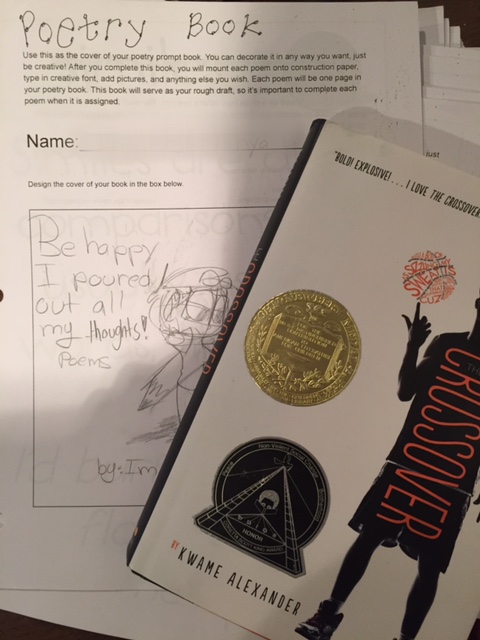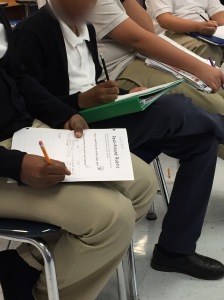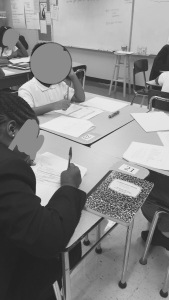The first week back to school after winter break is usually a tough one. Take for instance, my homeroom. One would have thought they had walked into a busy 20-something bar (minus the alcohol), with all the varying conversations, yelling over each other, and water bottles flipping so hard that they resembled hard-core bass being spun by a stocking-hat wearing D.J.
I was never a fan clubs in my 20s. In my mid-thirties, I have less patience for noise, especially at 7:55 a.m. on a Tuesday. But, I get it. Students needed to hug their friends, gossip about all that had happened in the 10 days since they last saw each other, and generally, be a kid. So, for 25 minutes, Club322 was open for business, that is until breakfast was over and we reverted back to Room 322, Literacy Class.
Engaging students after a break can, flip or flop (HGTV fans, get it?!). My goal – flip students from their vacation brains back to their engaged, critical-thinking school brains. Easy, right?!
Of course, nothing is easy when it comes to middle school students! I knew I had to “hook” them and I had just the tool – Kwame Alexander‘s fantastic novel, The Crossover. Seriously, if you have not read this one, I encourage beg you to do so.
Reasons why I love The Crossover (and why your students will too!)
- It’s written in poems. Most students (and some teachers, including myself) struggle with writing poetry. Thus, teaching it usually makes me utter things like, “Ughhhhhhhh” – let me just say, the struggle has always been real. Until now. The Crossover allows students the opportunity to read various types of poems, which obviously lends itself to teaching poetry – it’s a win-win for teachers! My students are so engaged in this book and I’m even learning that my spoken word is pretty on point (a student told me this, so it’s clearly true). I mean, just look at this poem and tell me you’re not dying to read more…

- Sports. If you’re a middle schooler, chances are, you’re hype about some kind of sport. If you’re a middle school boy, that sport is probably basketball. The Crossover is about basketball, which will already appeal to many students. But of course, there are those who sit at their desks and glare at me, thinking, I hate sports, therefore I will hate this book. This is where I say, “Not so fast, because aside from basketball, this book also has…”
- Drama!!!! Lots of drama. Back-stabbing friend/family drama. Girl/boy drama. Sports drama. Rivalry. Okay, now most (if not all) of my students are engaged.
- Creative opportunities. I assigned a Poetry Book as an ongoing assignment while we read the novel. Alexander does a great job incorporating a variety of poems in this book, so why not use it as a teaching tool?!

- Annotating text. My students have annotated and close read text this year, so poetry is a great way for them to practice utilizing those skills. I’m sure they’ll come in handy on some state-wide assessment later this spring, so this is my way of “teaching to the test” without “teaching to the test.”

I’m using Socratic Seminars with this novel – more about that in another blog post. So far, I’m pleased with how engaged my students are and I’m even more excited that my school got me a class set of Alexander’s novel, Booked! Some of my students spied this in the back of my room and can’t wait to get their hands on it. Now that’s what I call motivation!
How do you engage students after a long break?










